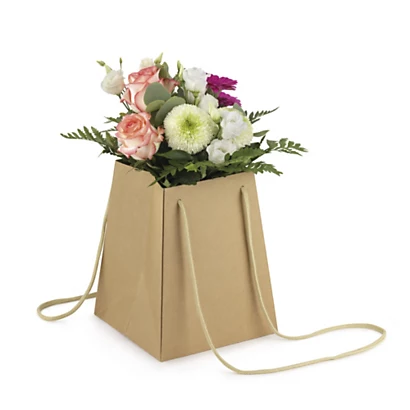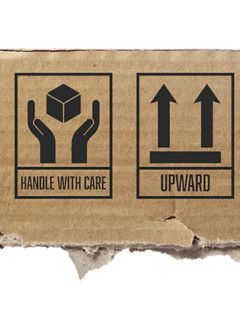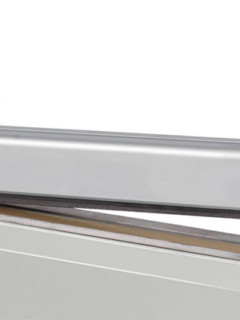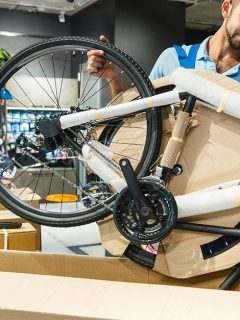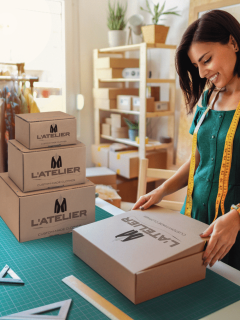The ship as a means of transport:
It happens again and again, most recently the lost cargo of the MSC Zoe made headlines earlier this year. Almost 300 shipping containers went overboard in extremely rough seas. Numerous containers have since washed up on the German North Sea coast and on the coasts of islands from Texel to Schiermonnikoog (Netherlands), but a large part of the cargo is still floating in the North Sea – and in addition to the imminent environmental danger, it also poses a risk to further shipping traffic.
1.2 million kilograms of rubbish – equivalent to 70 truckloads – have already been collected. At the moment, no more containers seem to have opened, and salvage crews are working at full speed to recover the remaining containers despite unfavourable weather conditions. In the worst case, they will be busy for weeks and months to come.
What orders of magnitude!
300 containers, just overboard? 1.2 million kilograms? Unimaginable orders of magnitude for anyone who does not come into contact with ship transport in their daily work. But it is also clear: somehow they have to get to the shops and warehouses, the mobile phones, tablets and flat screens, the clothes, the bananas, the tea and the coffee.
The port: the gateway to the world
The gateway to the world for Germany is the Port of Hamburg. Around 4,500 container ships from all over the world call at the gigantic goods handling centre every year, supplying us with 98% of all general cargo. And the calculation is simple: the bigger the ship, the more containers can be transported – at almost unchanged costs for personnel and fuel. A container ship of the size of the MSC Zoe is therefore one of the more economical: It can load up to 19,000 containers.
Why transport by ship
The advantages of transport by air are obvious: it’s faster! For importing goods from China, for example, you will have to wait around 35-40 days, depending on the ports you use, if you decide to go by sea, whereas you can expect to receive the goods by plane after around 10 days.
But? But!
Transport by ship is immensely cheaper, and of course this is even more true for heavy cargo than for light general cargo. For example, the share of transport costs for transport by container ship is on average only two to three percent of the total costs of a product.
Shipping container – standard size
It is estimated that 38 million containers are in circulation worldwide. More than 90% of the containers correspond to international standard dimensions, which is what makes effective loading and unloading possible in the first place.
The common standard dimensions of a shipping container are:
- 20-foot container: 6.06 metres long, 2.44 metres wide and 2.59 metres high
- 40-foot container: width and height identical, but 12.19 metres long
Is the sea route now risky for my cargo?
The reports about the MSC Zoe have brought the risks back into focus. When 300 containers go overboard, that’s quite a “house number”. Irritatingly, there are no reliable figures on this. It is estimated that up to ten thousand containers are damaged each year. Measured against the total volume that moves across the world’s oceans each year without any incident (2016: 130 million containers), this would be a share of 0.00769 percent.
Increase the safety of sea freight
The risk seems calculable. If your goods suffer damage during transport by ship, it is more likely to be due to improper loading or lack of securing in the container. And this is what YOU can do to secure your goods for transport in the shipping container:
Container utilisation: Not just a question of cost
It’s a simple basic principle and applies to filling a box on a small scale just as it does to filling a container on a large scale: Optimal container utilisation is not only a question of cost reduction, but also means more safety. If the container is loaded evenly and “up to the roof”, the goods inside cannot start moving. If the container is nevertheless set in motion, during loading or in extreme cases because it starts to slide on the ship, nothing can slide around or fall in the container, the risk of breakage is low.
Increase utilisation and stability through sub-packaging
Corrugated board is light – and stable. Corrugated containers, for example, are ideal for safely “underpacking” and stacking your goods in the shipping container.
Please note the information on the weights to be loaded as well as the static and dynamic loads on the sea route.
Line the cardboard packaging for better protection against moisture, for example with tar paper or anti-corrosion film. We also recommend the use of desiccant bags.
Use container pallets that match the cardboard packaging. Practical with the Interpal pallet container: here the pallet is already “included” and made of recycled PP, which makes it insensitive to water, grease and acids. Alternative: INKA pallets
For better stability in cardboard packaging, pad cavities with paper padding or air cushioning. And: Optimise the weight distribution in the cardboard box: Heavy packages to the bottom, the light ones to the top.












